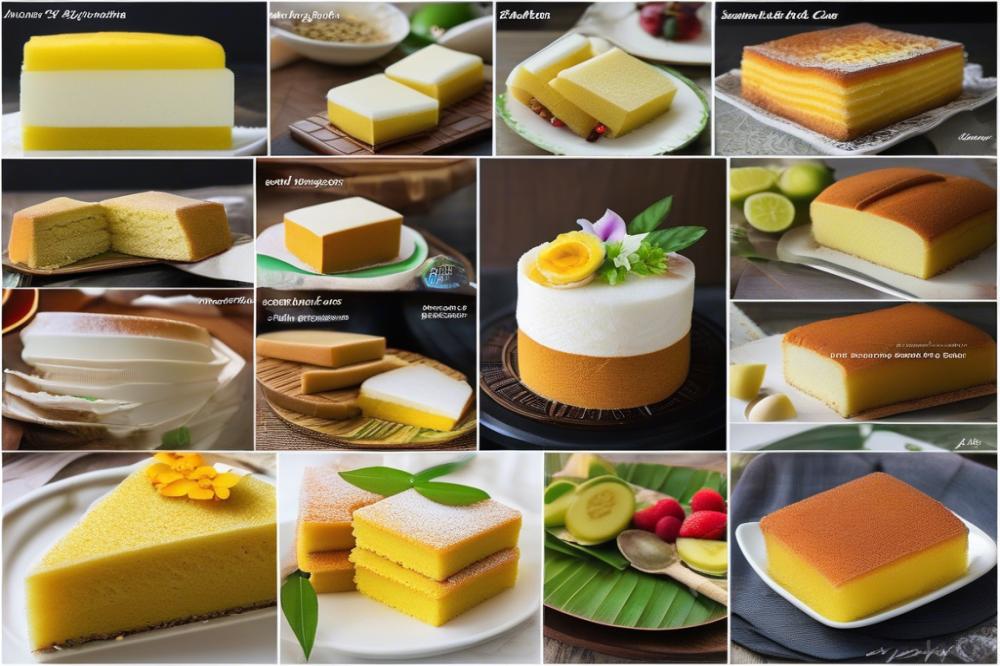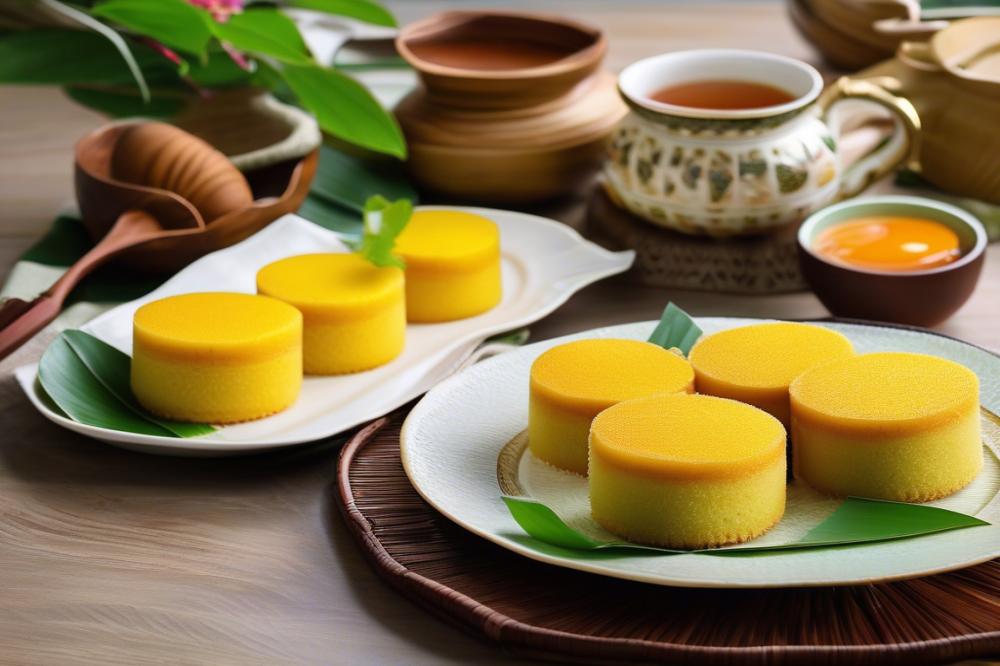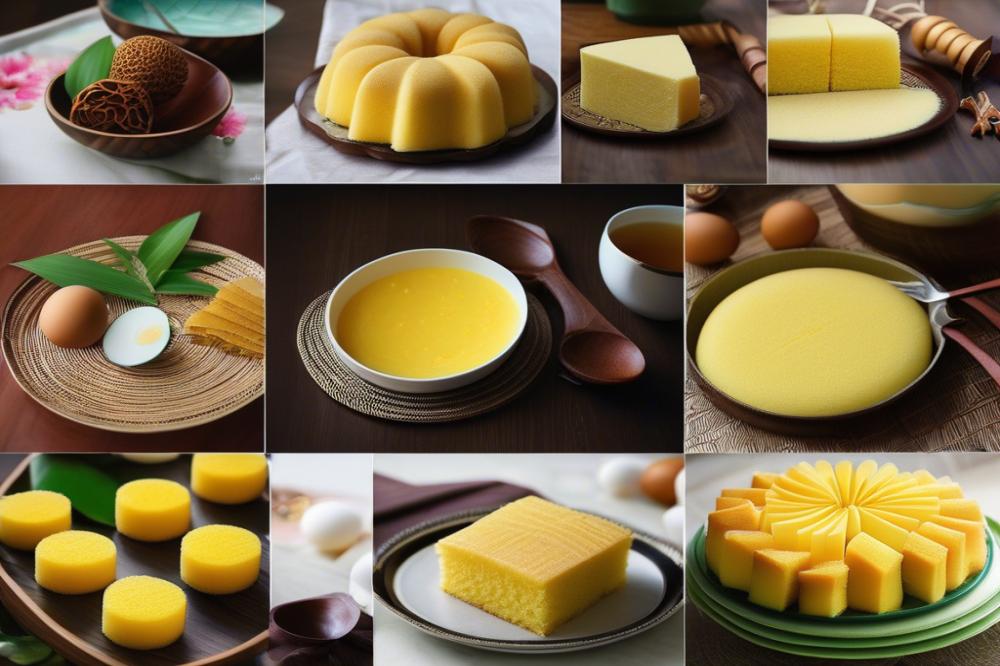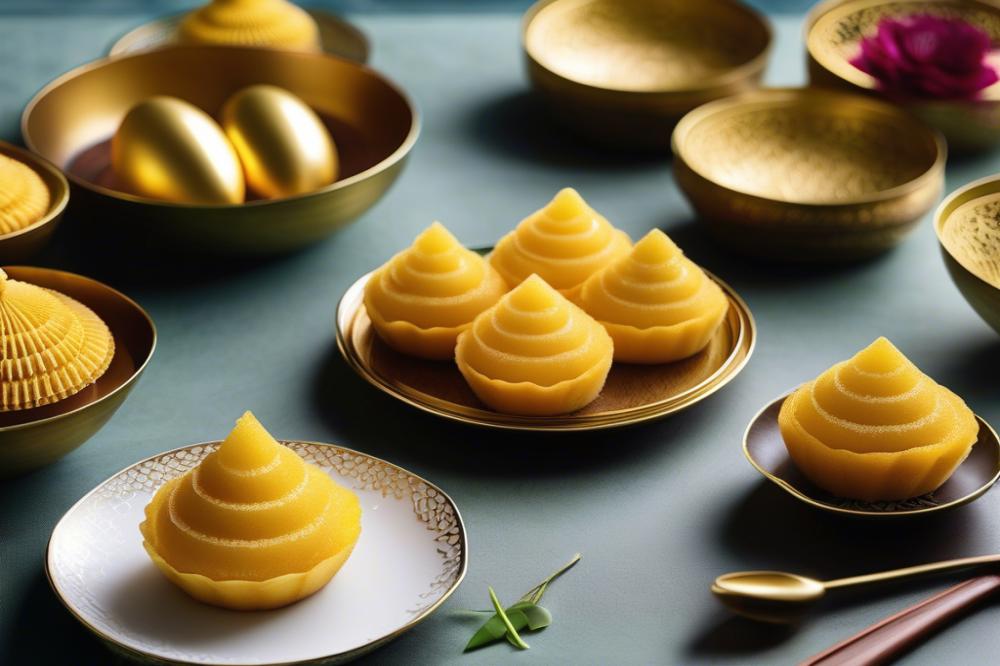Introduction
Kuih Bahulu is a classic egg cake that holds a special place in the hearts of many Malaysians. This delightful Malay dessert is cherished for its light, fluffy texture and sweet flavor. Traditionally baked in small molds, each piece has a charming golden-brown color, making it irresistible as both a treat and a snack.
During festive gatherings, the significance of this steamed cake becomes even more pronounced. Families often come together to share these sweet snacks, celebrating with joy and laughter. Whether it’s during Eid or Chinese New Year, this dessert often graces the tables, symbolizing unity and togetherness among loved ones.
Moreover, Kuih Bahulu reflects the rich cultural tapestry of Malaysia. Its recipe has been passed down through generations, with family recipes showcasing various techniques and ingredients. Coconut milk, a common addition, enhances flavor, creating a unique aroma that fills the kitchen when baking. For many, preparing this cake is not just about the food but also about connecting with their heritage.
This beloved Malaysian sponge cake continues to be a staple in many households. With every bite, one can taste the essence of tradition and family. The experience of enjoying Kuih Bahulu creates lasting memories and strengthens bonds amongst family and friends.
History of Kuih Bahulu

Origins of Kuih Bahulu in Malay culture
Kuih Bahulu is deeply rooted in Malay heritage. This delightful egg cake has been enjoyed for generations. Its origins can be traced back to the Malay archipelago, where traditional recipes were passed down through families. The use of simple ingredients like flour, eggs, and sugar created a sweet, memorable treat. Coconut milk often enhances the flavors, giving each bite a rich taste. Finding this dessert at gatherings showcases its significance in the culture.
Evolution of the recipe through generations
Over time, the kuih has transformed as families adapted their recipes. Each generation adds its own twist, creating variations that reflect personal tastes. Some may choose to use pandan for flavor, while others prefer vanilla. The methods of baking or steaming have also changed, influencing texture and appearance. As new ingredients became available, creativity flourished, allowing for unique interpretations. Despite these changes, the essence of the traditional recipe remains. Recipes vary from one family to another, making each version special.
Role of Kuih Bahulu in celebrations and festivals
Festive treats hold a special place in celebrations. This egg cake is commonly prepared during major occasions. Weddings, Eid, and family gatherings wouldn’t feel complete without it. It symbolizes joy and togetherness, often enjoyed with loved ones. Serving kuih at events creates a warm atmosphere, inviting everyone to partake in the sweetness. The act of baking together fosters bonds among family members. Enjoying these sweet snacks brings back nostalgic memories of childhood for many. Each bite tells a story of heritage blended with modern life.
Ingredients and Cooking Instructions

List of Ingredients
To make this traditional recipe for Kuih Bahulu, gather the following ingredients:
- 4 large eggs
- 200 grams sugar
- 200 grams all-purpose flour
- 100 ml coconut milk
- 1 teaspoon vanilla extract
- 1 teaspoon baking powder
Cooking Instructions
Start by preheating the oven to 180°C (350°F). Prepare your kuih bahulu molds by greasing them lightly. It’s crucial that the molds are ready to ensure easy removal of the cakes later.
Next, beat the eggs and sugar together in a mixing bowl. Whisk until the mixture becomes fluffy and light in color. This process is important as it incorporates air into the egg cake, giving it a lovely texture.
Gently fold in the all-purpose flour, coconut milk, vanilla extract, and baking powder. Be careful not to overmix; just combine the ingredients until they are blended well. The coconut milk adds a rich flavor that’s typical for sweet snacks in this culture.
Once your batter is ready, pour it into the prepared molds. Fill each mold about two-thirds full to allow room for the cakes to rise. Bake them in the oven for around 15 to 20 minutes or until they turn golden brown. The delightful aroma will fill your kitchen, making it hard to resist.
After baking, let the kuih cool for a few minutes in the molds before gently removing them. Enjoy these sweet treats during festive occasions, or as a tasty addition to your family recipes.
Nutritional Information

When considering the traditional recipe for Kuih Bahulu, it’s important to explore the ingredients that create this delicious egg cake. The primary components include eggs, sugar, flour, and often coconut milk. Each ingredient brings its own unique nutritional profile to the mix.
Eggs are packed with protein, providing essential amino acids needed for growth and repair. Sugar contributes to the energy content but offers little in terms of vitamins or minerals. Flour, especially if used in its whole form, can provide fiber along with carbohydrates. Coconut milk adds healthy fats, but it is also calorie-dense. Together, these ingredients create a delightful Malay dessert that is both rich and satisfying.
Caloric content in a typical serving of this egg cake can range from 70 to 100 calories, depending on the portion size and specific recipe adjustments. Carbohydrates primarily come from the flour and sugar, often making up about 60-70% of the total calorie count. Proteins from the eggs contribute around 10-15%, while fats, mainly from coconut milk, account for the remaining 15-20%. Balanced together, they create a tasty treat perfect for festive occasions.
While enjoying sweet snacks like Kuih Bahulu, it’s wise to keep some health considerations in mind. Moderation is key. Indulgence in such festive treats can lead to an excess of sugar and calories, impacting overall health. Pairing these delights with fruits or nuts can help balance some of the sweetness. Additionally, sticking to family recipes that use wholesome ingredients can enhance the nutritional value.
For those who love baking, consider experimenting with alternative sweeteners or reducing sugar to create a lighter version. Incorporating whole grain flours can also improve fiber content. The versatility of this steamed cake lends itself to many variations, so don’t hesitate to adapt recipes for your dietary needs while preserving the essence of this cherished treat.
Variations of Kuih Bahulu
Different Flavors and Add-Ins
Creating an egg cake can be a fun way to experiment with flavors. Some enjoy adding pandan extract for a sweet, fragrant taste. Others may opt for chocolate to make a richer treat. Historical family recipes often call for coconut milk, enhancing the texture and adding a creamy element. These choices turn traditional recipes into diverse delights that suit different palates. Toppings like grated coconut or a sprinkle of gula Melaka can add even more depth.
Regional Variations across Malaysia
Each region of Malaysia boasts its own twist on this beloved Malay dessert. In the north, some make a deeper, softer version that melts in your mouth. Those in the east often use local ingredients, creating cakes that reflect their culture. For instance, adding banana or durian gives a creative spin to this classic. The variations often tell stories of local traditions and celebrations, showing how food can connect families and communities.
Modern Twists on the Traditional Recipe
As tastes evolve, bakers have started to put their own spin on this popular kuih. Some blend traditional baking methods with modern techniques, resulting in innovative desserts. Using molds shaped like animals or flowers can turn this egg cake into a festive treat for children’s parties. Additionally, there are now gluten-free and low-sugar versions available. These adjustments make the dessert accessible to more people. The incorporation of new ingredients like matcha powder or berries also brings exciting new colors. Futuristic ideas like these keep the essence of the snack while expanding its reach.
Serving Suggestions
Kuih Bahulu is a delightful addition to any celebration or gathering. This traditional recipe offers a light and fluffy texture, making it perfect for sharing among family and friends. When it comes to serving this egg cake, presentation can make a big difference. Arrange the sweet snacks on a colorful platter. You can even place them in decorative boxes for a charming touch. Guests will be delighted just by looking at these festive treats.
Pairing these little cakes with beverages enhances their flavor. Tea is a popular choice, especially fragrant varieties like pandan or jasmine. Coffee also goes well, balancing the sweetness. For something more traditional, consider serving them with kopi or local herbal drinks. Combining Kuih Bahulu with other traditional Malay desserts adds variety. Things like ondeh-ondeh and curry puffs complement the flavors beautifully.
Festive occasions call for special touches. Why not use banana leaves as a base for serving? Not only does it look rustic, but it also adds a slight aroma. Sprinkling some coconut milk on top can enhance the experience too. During celebrations, it’s common to find these treats alongside family recipes. The act of sharing foods made from beloved traditions brings everyone together. Whether it’s a wedding, Hari Raya, or a simple family gathering, these small delights are sure to please.
Wrapping It Up
Kuih Bahulu holds a special place in Malaysian culture. This delightful egg cake is often enjoyed during festive occasions, celebrations, and family gatherings. People pass down the traditional recipe through generations, symbolizing family bonds and cultural heritage. Each bite of this sweet treat brings a sense of nostalgia and happiness, connecting individuals to their roots.
Trying your hand at making this beloved snack at home can be a rewarding experience. Gathering the ingredients and following the steps of the traditional recipe can become a joyful activity for you and your loved ones. The process can spark creativity and patience as you wait for that perfect moment when the cakes turn golden brown in the oven.
There’s a special joy in sharing Kuih Bahulu with family and friends. These little cakes are not just snacks; they represent warmth and togetherness. Serving them during gatherings invites conversation and laughter, making memories that last a lifetime. Ultimately, enjoying these treats with those you care about can create a sense of unity and celebration in your home.



